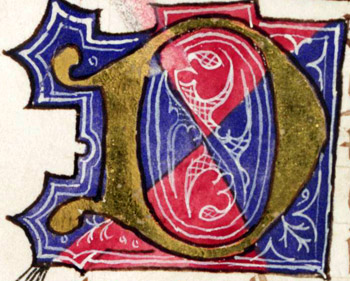Sultan of Babylon
General Information
Plot Summary

While hunting near the Spanish town of Agremare, the Sultan Laban learns that one of his warships has been plundered by the citizens of Rome. Vowing revenge, he assembles an army of Saracens, Africans and Asians and sets sail with his son, Ferumbras, and his daughter, Floripas. The Romans initially fight off the Sultan’s army, but when their outer ward is captured and their general killed, the Pope sends to Charlemagne for help. Despite the Pope’s efforts, the siege worsens, until a treacherous porter allows the Saracens into the city. Ferumbras sacks Rome and carries the relics of St Peter’s back to Agremare, where they celebrate with sacrifices. Charlemagne and his twelve Peers arrive and, finding Rome in flames, pursue the Saracens. Laban instructs his men to capture the Emperor, but although Ferumbras fights bravely the Christians gain the advantage.
This rankles Laban, who gathers more troops from exotic lands. After making offerings to his gods, he orders them to capture Charlemagne, Oliver and Roland, whom he wishes to convert. Ferumbras challenges six of the Peers, promising to convert if defeated. Roland refuses, but Oliver and Ferumbras fight a gruelling battle, each urging the other to renounce his faith. Finally, in answer to Charlemagne’s prayers, Ferumbras is wounded and agrees to be baptised. In the ensuing battle, however, both Oliver and Roland are captured by the Saracen army. Charlemagne takes Ferumbras into the Christian camp to be christened, while Laban throws Roland and Oliver into his dungeon. After six days they are liberated by Floripas, who kills their jailor and takes them to her chamber.
Charlemagne sends the remaining Peers to demand their release and the return of the relics, but they are also taken prisoner and placed in Floripas’ care. She declares her longstanding love for Guy, Duke of Bourgoyne and her willingness to be christened for his love. Guy initially refuses to accept her without Charlemagne’s blessing, but agrees when urged by the other Peers. Delighted, Floripas arms the knights and helps them seize her father’s castle. Laban, however, escapes through a window, assembles an army and returns to besiege the Peers, cursing his treacherous daughter and his ineffectual gods.
Helped by Floripas and her maidens, the Peers defend the castle and wait for Charlemagne’s arrival. A magic girdle helps them ward off hunger, but when this is lost, they conduct a dawn raid against the Saracens, stealing food and killing their men. A furious Laban becomes increasingly disillusioned with his gods and, when Floripas throws his treasure from the ramparts, he knocks down an idol. The Peers finally decide to create a diversion while Richard of Normandy leaves to find Charlemagne. Guy is captured during the skirmish, but to Floripas’ relief the others rescue him from hanging. Only the intervention of a Saracen bishop prevents the furious Sultan destroying his idols.
Richard reaches the French army and, despite the efforts of the treacherous Ganelyn, they turn back to Spain. They fight their way through Laban’s defences, defeating a ferocious giant charged with preventing their return; Ferumbras distinguishes himself by rescuing a trapped Charlemagne and capturing a fortified city. When they reach Agramoure they are reunited with the Peers and defeat Laban’s troops. They lead the captured Sultan into the city, where Floripas presents Charlemagne with the Roman relics. Laban refuses baptism and is executed, but Floripas is christened and married to Guy, who remains in Spain to rule alongside Ferumbras. Charlemagne returns to France, where he distributes the relics and hangs Ganelyn.
From: A. Lupak, ed. Three Middle English Charlemagne Romances. Kalamazoo, Michigan: Medieval Institute Publications, 1990.
Manuscript: Princeton University Library, MS Garrett 140
Manuscripts
Click a title below to search for all romances in that manuscript.